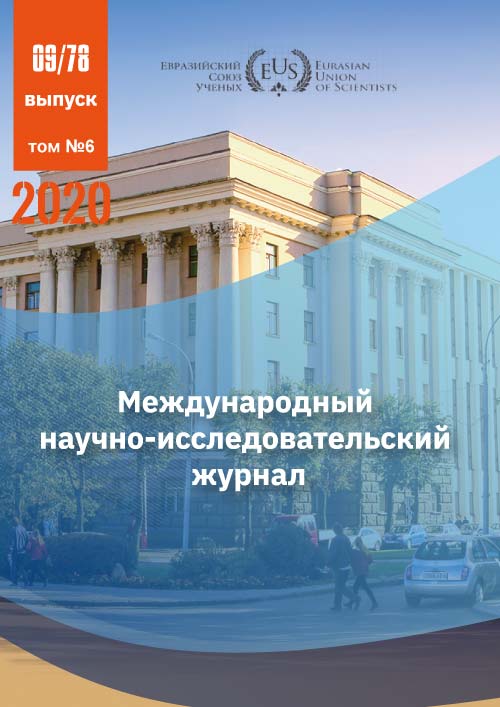COMPARATIVE ANALYSIS OF QUANTUM-CHEMICAL METHODS FOR CALCULATION ELECTRONIC CHARACTERISTICS OF POLYTHIOPHENES USED IN SOLAR ELEMENTS
Abstract
In this paper, a comparative analysis of semiempirical quantum chemical methods for calculating the energy of highest occupied molecular orbital (EHOMO) for various polythiophenes used in hybrid solar cells is carried out.
The energies of the highest occupied ЕВЗМО (eV) molecular orbitals calculated by quantum-chemical methods. Models built using HyperChem 8.0. software
References
[2]. Y.-C.Huang et al. Facile hot solvent vapor annealing for high performance polymer solar cell using spray process Solar Energy Materials & Solar Cells 114 ( 2013) pp. 24–30
[3]. M.C.Scharber, D.Muhrlbacher et al. Design in Bulk-heterojunction solar cells-Towards 10 % energyconversion efficiency//Adv. Mater. 2006, 18. pp. 789-794
[4]. G. Dennler, M.C. Scharber, C.J. Brabec, Polymer–fullerene bulk-heterojunction solar cells, Advanced Materials 21 (2009) 1323–1338.
[5]. Y. Sun, C. Cui, H. Wang, Y. Li, Efficiency enhancement of polymer solar cells based on poly(3hexylthiophene)/indene-C70 bisadduct via methylthiophene additive, Advanced Energy Materials 1 (2011) pp. 1058–1061.
[6]. T.D. Nielsen, C. Cruickshank, S. Foged, J. Thorsen, F.C. Krebs, Business, market and intellectual property analysis of polymer solar cells, Solar Energy Materials and Solar Cells 94 (2010) pp. 1553–1571.
[7]. S.W. Heo, K.W. Song, M.H. Choi, T.H. Sung, D.K. Moon, Patternable solution process for fabrication of flexible polymer solar cells using PDMS, Solae Energy Materials and Solar Cells 95 (2011) pp.3564– 3572.
[8]. J. Hou, H.Y. Chen, S. Zhang, G. Li, Y. Yang, Synthesis, characterization, and photovoltaic properties of a low band gap polymer based on silole-containing polythiophenes and 2,1,3-benzothiadiazole, Journal of the American Chemical Society 130 (2008) pp. 16144– 16145.
[9]. S.Y. Park, Y.J. Kang, S. Lee, D.G. Kim, J.K. Kim, J.H. Kim, J.W. Kang, Spray-coated organic solar cells with large-area of 12.25 cm2 , Solar Energy Materials and Solar Cells 95 (2011) pp. 852–855.
[10]. J. Hou, H.Y. Chen, S. Zhang, R.I. Chen, Y. Yang, Y. Wu, G. Li, Synthesis of a low band gap polymer and its application in highly efficient polymer solar cells, Journal of the American Chemical Society 131 (2009) pp. 15586–15587.
[11]. J. Peet, J.Y. Kim, N.E. Coates, W.L. Ma, D. Moses, A.J. Heeger, G.C. Bazan, Efficiency enhancement in low-bandgap polymer solar cells by processing with alkane dithiols, Nature Materials 6 (2007) pp.497–500
CC BY-ND
A work licensed in this way allows the following:
1. The freedom to use and perform the work: The licensee must be allowed to make any use, private or public, of the work.
2. The freedom to study the work and apply the information: The licensee must be allowed to examine the work and to use the knowledge gained from the work in any way. The license may not, for example, restrict "reverse engineering."
2. The freedom to redistribute copies: Copies may be sold, swapped or given away for free, in the same form as the original.







